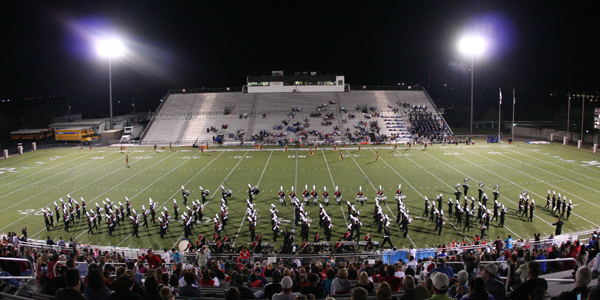
Marching bands around the nation recently reached the end of their season. From August to November, members of marching bands prepare themselves to entertain at football games and parades and to outperform other bands at competitions. Their practices range between one to two hours a week up to two or three hours a day never exceeding eight hours a week permitted by UIL rules in Texas. The band members work in the sun during the summer and after school. In multiple states in high schools, marching band offers a P.E. credit for students. With all of the similarities and requiring physical exertion along with producing a great deal of mental stress, marching band should be considered a sport.
Sports include any activity involving physical exertion and skill governed by a set of rules or customs and often undertaken competitively. Marching band exhorts physical forces from marchers while they march across the fields at varying tempos and calls for the flexing of muscles which are not often stretched to the extreme. While marching band does involve grueling physical stances and intense muscular flexing, the visual aspect does not consume the entirety of the activity. Marching band also requires masterful, meticulous playing of instruments, some weighing up to 50 lbs. such as the sousaphone or contrabass tuba. It also involves memorization of sets, forms, stylistic flair and performance quality which can only be achieved by a great deal of practice and determination. Simply put, the hard work of marching bands rival, if not exceed, the work put in by sports teams everywhere.
In terms of time, marchers devote a decent portion of their free time to their craft. Unfortunately for many marchers, the band geek stereotype undermines their hard work, devotion and sacrifice. The band geek stereotype has led some to believe marchers are simply walking to a tempo when in actuality, marching requires much more. Marching band requires an entirely different type of person who can simultaneously manipulate and control bodily convulsions which demand someone in high mental and physical state. The artistic aspect of marching band however sets it apart from other sports, making it far more unique but one all the same.
Marching band like many other mainstream sports has its own major league. Drum Corps International (DCI) has been in operation since 1972 and consists of three separate divisions in which drum corps can participate. DCI, the NFL, MLB and NHL are all non-profit organizations which represent the professional form of marching band, football, baseball and hockey, respectively. Marching band meets and often surpasses the threshold required for “sporthood” and as such should not be demeaned as a geeky activity, but as a sport.
Marching band should be respected as a sport and should be kept in high esteem because of the intensity of the work marchers put in, the work ethic of the marchers and the overall beautiful performance put on by bands. While most sports lack artistic flair, marching band excels at creating a unique form of sport with its own equally unique customs and practices.
